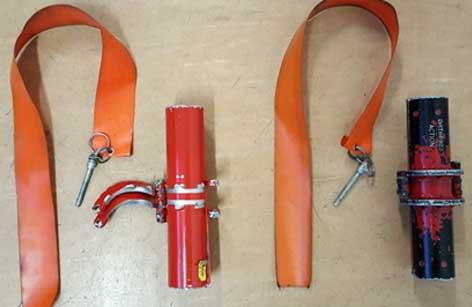Personnel working in and around aircraft have specific duties, and they also have a responsibility to advise the operating crew of any concerns they may have with an aircraft, a new ATSB investigation report highlights.

In preparation for an August 2018 scheduled flight from Perth Airport to Christmas Island, an apron engineer fitted landing gear ground locks (LGGL) to an Airbus A320 before it was towed to its departure bay. The apron engineer then went to supervise the refuelling of another aircraft, with the intention of returning for the refuelling of the A320 and removing the LGGL.
Approximately 40 minutes later, a flight crew member’s pre-flight walk-around identified the presence of the LGGL. The captain acknowledged the flight crew member’s observation but anticipated that normal departure procedures would lead to the removal of the LGGL before flight.
As departure approached, the apron engineer realised he would be unable to return for refuelling and contacted an engineer who was on-board the aircraft to supervise refuelling. The handover between the engineers was not effective at communicating the requirement to remove the LGGL. The on-board engineer supervised the refuelling and returned to the flight deck.
Due to rectification work in the flight deck, the flight crew commenced their pre-flight procedures later than anticipated. The crew did not detect that the LGGL had not been stowed on board the aircraft as required.
While waiting for pushback to commence, the pushback tug driver and dispatcher saw pins and associated flags attached to the landing gear of the aircraft. After being unable to contact the aircraft movements co-ordinator and with just seven minutes before the scheduled take-off, the tug driver removed the LGGL pins but unknowingly left the locking sleeves in place.
Regardless of someone’s specific role working around an aircraft, everyone has a responsibility to notify the operating crew of any concerns they may have with an aircraft and that any concerns are assessed and rectified by any qualified personnel before flight.
The tug driver then entered the cockpit to have the load sheet signed by the flight crew. Neither the tug driver nor the dispatcher advised the flight crew of the presence and removal of the lock pins.
The aircraft subsequently taxied for departure with the LGGL sleeves attached. A sleeve fell unnoticed onto the taxiway and the other fell onto the runway shortly after take-off. The flight crew were advised of the discovery of the discarded locking sleeves while on descent into Christmas Island, where the aircraft landed without incident.
“This investigation demonstrates how a number of relatively small errors or omissions between different work areas can combine to affect flight safety,” ATSB Transport Safety Director Dr Stuart Godley said.
“Regardless of someone’s specific role working around an aircraft everyone has a responsibility to notify the operating crew of any concerns they may have with an aircraft and that any concerns are assessed and rectified by qualified personnel before flight.”
The investigation found that a lack of documentation for the installation and removal of the LGGL following a positional tow and deficiencies in the handover between pre-flight engineers led to the locks remaining on the aircraft during flight preparation.
The ATSB welcomes the operator’s introduction of new procedures requiring an authorised person to sign an Aircraft Readiness Log to certify that the LGGL have been removed prior to flight. These new procedures also require that if the aircraft has been towed after the initial check, the LGGL must be checked again.
“Further, a notice has been issued to flight crews instructing them to use a standardised method for stowing LGGL pins and sleeves and a separate notice reminds ground handlers they should not remove pins themselves,” Dr Godley said.
Read the report: Aircraft preparation event involving A320, VH-FNP, Perth Airport, Western Australia, on 14 August 2018


